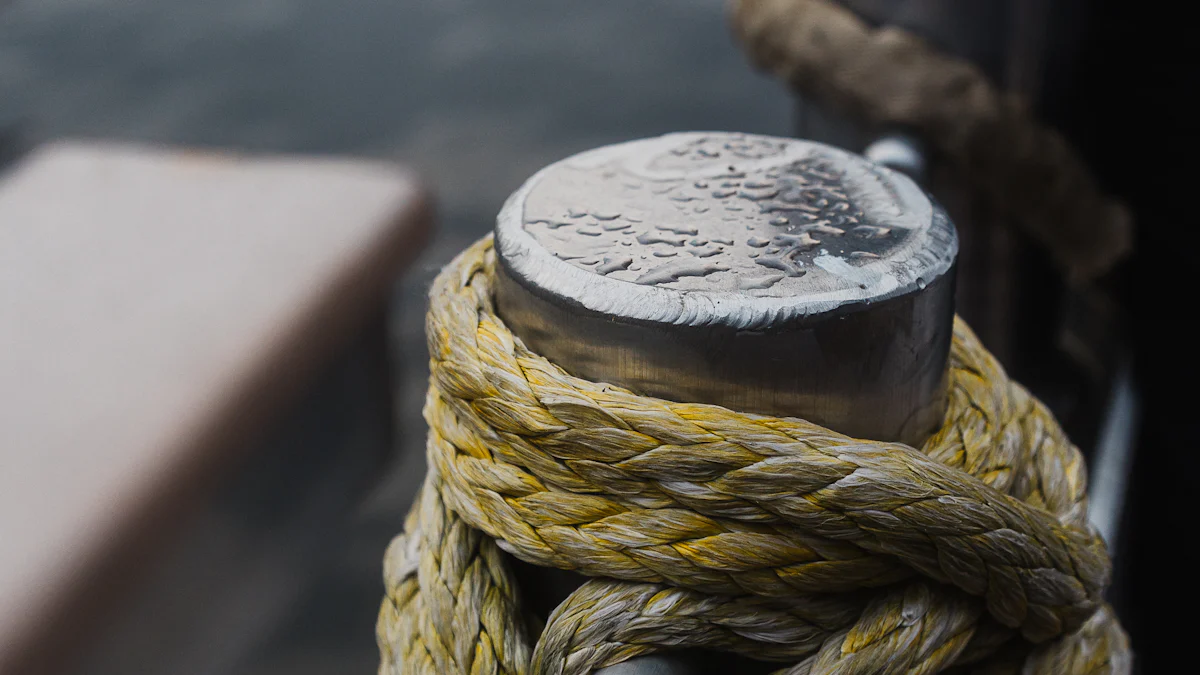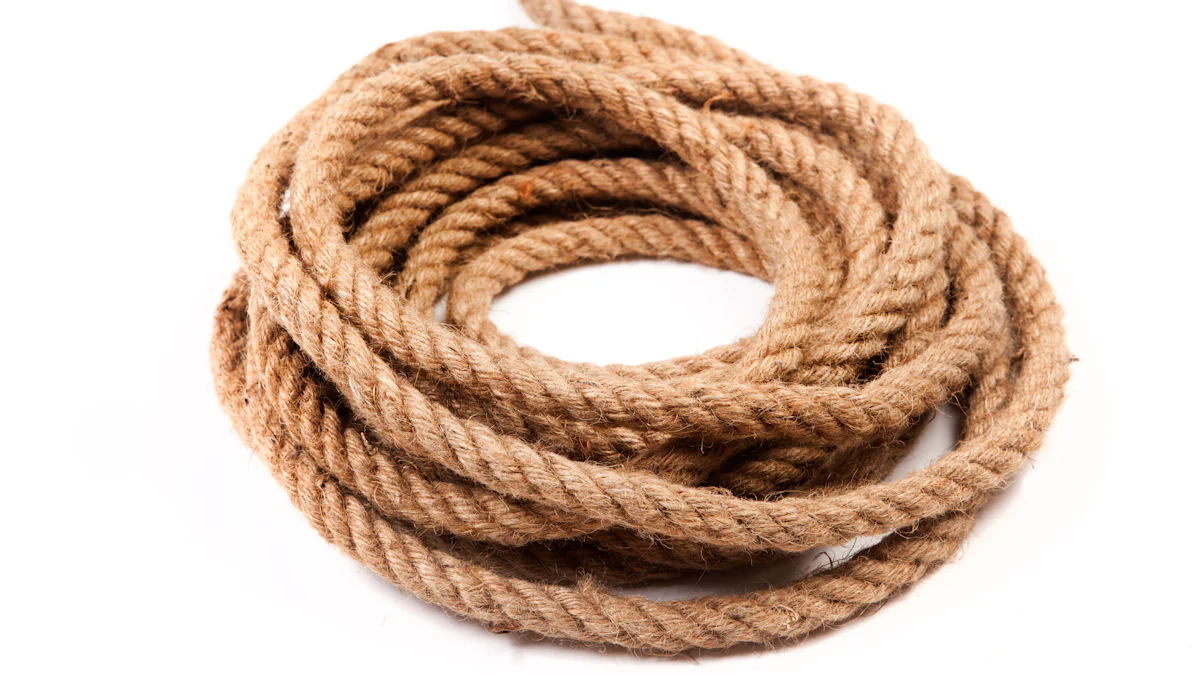Types of Mooring Ropes
Mooring Ropes secure vessels to docks, piers, or other structures. Choosing the right mooring rope ensures safety and stability. Various types of mooring ropes exist, each with unique characteristics and applications. These ropes include synthetic materials like polyester, nylon, and polypropylene, as well as natural fibers such as manila and sisal. High-performance options like HMPE and aramid ropes offer enhanced strength and durability. Understanding the differences helps in selecting the appropriate rope for specific maritime needs.
Key Comparisons
- Nylon vs. Polyester: Nylon ropes provide high elasticity and shock absorption. Polyester ropes offer comparable strength with less stretch and better UV resistance.
- Polyester vs. Polypropylene: Polyester ropes are heavy-duty with high breaking load and good abrasion resistance. Polypropylene ropes float and absorb virtually no water.
- Polyester vs. Polyethylene: Polyester ropes deliver strong performance with less stretch. Polyethylene ropes resist sun rays and friction effectively.
- Manila vs. Sisal: Manila ropes offer better grip and traditional maritime use. Sisal ropes provide resistance to sunlight but have less durability.
Synthetic Mooring Ropes
Nylon Mooring Ropes
Characteristics of Nylon Mooring Rope
Nylon mooring ropes exhibit high elasticity and strength. These ropes are flexible and retain their strength when wet. The material's excellent shock absorption makes it ideal for various marine operations. However, nylon is prone to UV degradation over time.
Uses of Nylon Mooring Rope
Nylon mooring ropes are commonly used in marine operations. These ropes secure vessels to docks and piers. The high elasticity of nylon makes it suitable for applications requiring shock absorption.
Advantages and Disadvantages
Advantages of Nylon Mooring Rope:
- Excellent shock absorption
- Retains strength when wet
- High flexibility
Disadvantages of Nylon Mooring Rope:
- Prone to UV degradation
- Can become stiff over time
Polyester Mooring Ropes
Characteristics of Nylon Mooring Rope
Polyester mooring ropes are known for their superb tensile strength. These ropes offer outstanding UV resistance and good abrasion resistance. Polyester ropes are highly durable in marine environments and provide a balance of cost-effectiveness and longer service life. Unlike nylon, polyester does not absorb water, making it suitable for securely mooring boats.
Uses of Polyester Mooring Rope
Polyester mooring ropes are ideal for long-term mooring applications. These ropes are used in sunny regions due to their high UV resistance. Polyester ropes are also popular in rigging and other marine operations where stretch is not desired.
Advantages and Disadvantages
Advantages of Polyester Mooring Rope:
- High breaking load
- Good abrasion resistance
- Superior UV resistance
Disadvantages of Polyester Mooring Rope:
- Heavier than other synthetic ropes
- Less elastic, providing minimal shock absorption
Polypropylene Mooring Ropes
Characteristics of Polypropylene Mooring Rope
Polypropylene mooring ropes are lightweight and buoyant. These ropes absorb virtually no water and float on the surface. Polypropylene ropes are cost-effective and easy to handle. New generation polypropylene ropes offer superior strength and abrasion resistance.
Uses of Polypropylene Mooring Rope
Polypropylene mooring ropes are ideal for floating applications. These ropes are suitable for those on a budget and are often used in situations where the rope needs to float on water.
Advantages and Disadvantages
Advantages of Polypropylene Mooring Rope:
- Cost-effective
- Floats on water
- Absorbs no water
Disadvantages of Polypropylene Mooring Rope:
- Lower strength compared to nylon and polyester
- Less durable under UV exposure
Natural Fiber Mooring Ropes
Manila Mooring Ropes
Characteristics of Manila Mooring Rope
Manila mooring ropes come from the Abaca plant, a relative of the banana plant found in the Philippines. These ropes exhibit high strength compared to other natural fiber ropes. Manila ropes resist moisture, rot, sunlight, and abrasion. The flexibility of these ropes allows for easy knotting. However, manila ropes shrink when wet, making knots likely to become permanent.
Uses of Manila Mooring Rope
Manila mooring ropes serve traditional maritime purposes. These ropes are ideal for mooring lighter to moderate vessels. The natural look of manila ropes makes them suitable for decorative applications as well.
Advantages and Disadvantages
Advantages of Manila Mooring Rope:
- High strength among natural fiber ropes
- Resistance to moisture, rot, and sunlight
- Flexible and easy to knot
Disadvantages of Manila Mooring Rope:
- Shrinks when wet, leading to permanent knots
- Requires constant servicing to maintain effectiveness
- Poor chemical resistance
Sisal Mooring Ropes
Characteristics of Sisal Mooring Rope
Sisal mooring ropes derive from the Agave plant. These ropes are stiff and provide good resistance to sunlight. Sisal ropes are biodegradable and eco-friendly. However, sisal ropes lack the durability of synthetic ropes and are prone to wear and tear.
Uses of Sisal Mooring Rope
Sisal mooring ropes find use in agricultural and marine applications. These ropes are suitable for temporary mooring needs. Sisal ropes also serve well in environments where biodegradability is a priority.
Advantages and Disadvantages
Advantages of Sisal Mooring Rope:
- Biodegradable and eco-friendly
- Resistant to sunlight
- Stiff and provides good grip
Disadvantages of Sisal Mooring Rope:
- Less durable compared to synthetic ropes
- Prone to wear and tear
- Limited lifespan in harsh conditions
High-Performance Mooring Ropes
HMPE (High Modulus Polyethylene) Mooring Ropes
Characteristics of HMPE Mooring Rope
HMPE mooring ropes offer exceptional strength and durability. These ropes possess a high strength-to-weight ratio, making them lighter than steel wire ropes. The abrasion resistance of HMPE ropes extends their lifespan significantly. HMPE ropes resist corrosion, reducing maintenance needs. The material's low stretch enhances stability in mooring applications.
Uses of HMPE Mooring Rope
HMPE mooring ropes find use in demanding maritime environments. Offshore applications benefit from the reduced mooring footprint and lower vessel offset. These ropes suit high-performance tasks requiring lightweight yet strong materials. HMPE ropes also perform well in situations needing high abrasion resistance.
Advantages and Disadvantages
Advantages of HMPE Mooring Rope:
- High strength-to-weight ratio
- Excellent abrasion resistance
- Corrosion resistance
- Long lifespan
Disadvantages of HMPE Mooring Rope:
- Higher cost compared to other materials
- Potential degradation under UV exposure
Aramid Mooring Ropes
Characteristics of Aramid Mooring Rope
Aramid mooring ropes exhibit high tensile strength and heat resistance. These ropes maintain integrity under extreme temperatures. Aramid fibers resist chemicals, enhancing their durability in harsh environments. The low stretch of aramid ropes provides stability during mooring operations. However, aramid ropes can degrade when exposed to UV light over time.
Uses of Aramid Mooring Rope
Aramid mooring ropes serve industrial and marine purposes. These ropes perform well in high-temperature environments. Chemical plants and refineries utilize aramid ropes for their resistance to chemicals. Marine operations requiring low stretch and high strength also benefit from aramid ropes.
Advantages and Disadvantages
Advantages of Aramid Mooring Rope:
- High tensile strength
- Heat resistance
- Chemical resistance
- Low stretch
Disadvantages of Aramid Mooring Rope:
- Higher cost
- UV degradation over time
Comparison between different Types of Mooring Ropes
A comparison table helps in understanding the distinct features of various mooring ropes. The table below highlights key characteristics, uses, and advantages of different types of mooring ropes.






